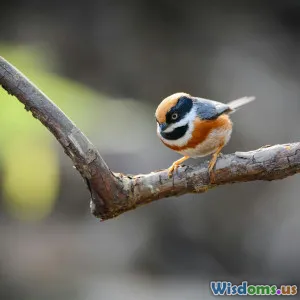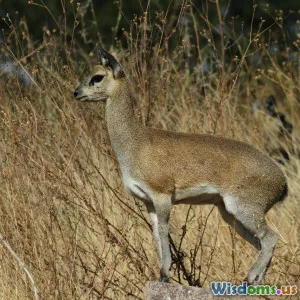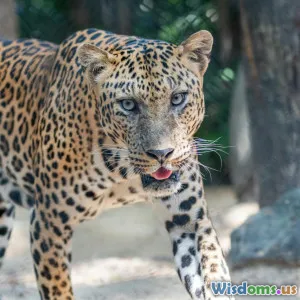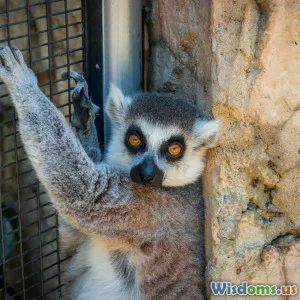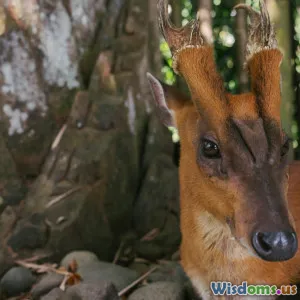
Comment les espèces invasives affectent la faune indigène
(How Invasive Species Affect Native Wildlife)
6 minute lu Découvrez l'impact profond que les espèces invasives ont sur la faune et les écosystèmes locaux, et apprenez comment lutter contre ce problème urgent. (0 Avis)
How Invasive Species Affect Native Wildlife
In the intricate tapestry of our planet's ecosystems, every species plays a vital role. However, the introduction of invasive species can unravel this delicate balance, leading to profound consequences for native wildlife. Understanding how invasive species affect native ecosystems is crucial for conservation efforts and maintaining biodiversity.
What Are Invasive Species?
Invasive species are non-native organisms that, when introduced to a new environment, can cause harm to the ecosystem, economy, or human health. These species can be plants, animals, fungi, or microorganisms that thrive in their new habitat, often outcompeting native species for resources. The World Conservation Union estimates that invasive species are among the leading causes of species extinction worldwide.
The Impact on Native Wildlife
1. Competition for Resources
Invasive species often compete with native species for food, water, and shelter. For example, the introduction of European starlings in North America has led to a decline in native bird populations as these starlings outcompete them for nesting sites and food sources. This competition can result in decreased populations of native species, pushing them closer to extinction.
2. Predation and Parasitism
Some invasive species are predators of native wildlife. The brown tree snake, introduced to Guam, has decimated local bird populations by preying on them. Similarly, invasive species like the Asian tiger mosquito can introduce new diseases to native wildlife, disrupting local ecosystems and posing health risks.
3. Habitat Alteration
Invasive plants can alter the physical environment, making it less hospitable for native species. For example, the spread of kudzu in the southeastern United States has led to the smothering of native plants, thereby changing habitat structure and reducing biodiversity. Such alterations can have cascading effects throughout the ecosystem.
4. Disease Introduction
Invasive species can also bring diseases that native wildlife have no immunity against. The introduction of the chytrid fungus by invasive amphibians has led to massive declines in native frog populations globally. This highlights the risks associated with species translocations and the importance of biosecurity measures.
Case Studies
The Nile Perch in Lake Victoria
Introduced in the 1950s for commercial fishing, the Nile perch has led to the extinction of numerous native fish species in Lake Victoria. Its predation and the subsequent decline of native fish have disrupted the entire aquatic ecosystem, affecting both local fisheries and the livelihoods of communities dependent on them.
The Burmese Python in the Florida Everglades
This invasive snake species has caused significant declines in native mammals and birds in the Everglades. As a top predator, it has not only reduced populations of species but has also altered the food web dynamics, showcasing how invasive species can disrupt entire ecosystems.
Mitigation Strategies
1. Prevention
Preventing the introduction of invasive species is the most effective strategy. This includes strict regulations on the importation of non-native species and public education campaigns to raise awareness about the risks of invasive species.
2. Early Detection and Rapid Response
Monitoring ecosystems for early signs of invasive species can facilitate quick action to eradicate them before they establish a foothold. This strategy relies on collaboration between government agencies, researchers, and local communities.
3. Restoration Efforts
Restoring native habitats can help bolster native species against the impacts of invasive species. This might involve the removal of invasive plants and replanting native flora to restore ecological balance.
4. Research and Community Involvement
Encouraging research on the impacts of invasive species and involving local communities in conservation efforts can foster a sense of stewardship and collective action.
Conclusion
Invasive species present a formidable challenge to native wildlife and ecosystems. Their impacts can be far-reaching, affecting biodiversity, habitat health, and even human economies. By understanding these dynamics and implementing effective mitigation strategies, we can protect our native wildlife and preserve the integrity of our ecosystems. It is a collective responsibility that requires awareness, action, and ongoing commitment from individuals, communities, and policymakers alike. Together, we can combat the threat of invasive species and ensure a balanced and thriving natural world for future generations.
Évaluer la publication
Avis des utilisateurs
Autres publications dans Conservation de la Faune
Publications populaires










